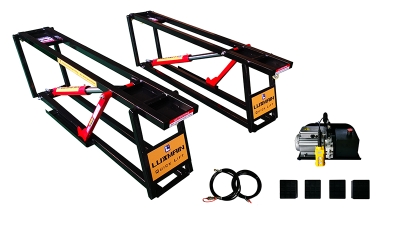Overcoming Common Issues with Car Portable Car Jacks for Safe Vehicle Maintenance
Table of Contents
- Identifying Common Problems with Portable Car Jacks
- Exploring Alternative Lifting Solutions for Vehicle Maintenance
- Tips for Choosing the Right Portable Car Jack for Your Needs
- Safety Considerations When Using Portable Car Jacks
- Innovative Designs in Portable Car Jacks for Enhanced Usability
- Maintenance and Care Tips for Prolonging Jack Lifespan
- Enhancing Automotive Efficiency: Insights from Recent Industry Reports on the Portable Car Quick Lift AC Series
- FAQS
- Conclusion
- Related Posts
When it comes to taking care of your car, the portable car jack has really become a must-have for both everyday car owners and professionals. I read somewhere that, according to Research and Markets, the global market for automotive jacks is expected to hit around $4 billion by 2025 — that’s pretty crazy, but it just shows how much people want quick, reliable solutions for vehicle maintenance. As more and more folks realize how important proper maintenance is—both for safety and keeping their cars running smoothly—knowing how to use a portable car jack properly becomes super important. That said, a lot of users run into common hiccups, like worries about stability or just not quite knowing how to do things the right way. At Yantai Tonghe, we’re leaders in hydraulic systems and car lifts, and we totally get these challenges. Our goal is to share tips and ideas that help make vehicle maintenance safer and easier for everyone. By clearing up these typical issues, we hope to give car owners the confidence to use portable jacks safely and effectively whenever they need them.

Identifying Common Problems with Portable Car Jacks
When it comes to taking care of your car, portable car jacks really are a lifesaver for drivers. That said, they’re not perfect and can run into some pretty common issues that might make using them a pain. For example, one of the biggest problems I see is that many jacks simply don’t have enough lifting power—they’re not really built for bigger vehicles or heavier loads. So, it’s super important to check out the specs before you try to use one, just to make sure it’s safe and up to the task. On top of that, stability can be a tricky thing. If you don’t put the jack in the right spot, it can easily slip or cause accidents, so getting familiar with the proper way to operate it is pretty much a must.
Another thing to watch out for is wear and tear. Since portable jacks are often exposed to the elements—rain, dirt, you name it—they can rust or degrade over time. A bit of regular maintenance, like lubricating the moving parts and storing it in a dry, safe spot, can really extend its life. Plus, knowing how to use extra tools like tire repair kits or jump starters can be a huge help when you’re on the road. Being proactive and a little informed can save you a lot of headaches and make sure you’re maintaining your vehicle safely and effectively.
Exploring Alternative Lifting Solutions for Vehicle Maintenance
When it comes to taking care of your vehicle, safety should always be the top priority — especially when you're using portable car jacks. Most folks are familiar with the traditional jacks, but let’s be honest, they don’t always feel super stable, which can sometimes lead to accidents. Did you know that the National Highway Traffic Safety Administration (NHTSA) reports around 1,000 injuries each year from improper jack use? That’s pretty concerning, right? Because of that, it’s definitely worth looking into other options to make lifting and maintenance safer and less stressful.
One pretty solid choice is a hydraulic floor jack. These guys usually have a wider base and can handle heavier loads, which adds a lot more stability. Some studies from the Automotive Lift Institute show that hydraulic jacks can support anywhere from 1.5 tons up to over 3 tons — that means a much lower chance of them collapsing while you’re working on your car. Plus, newer tech like electric car jacks are becoming more popular now. They’re super easy to use and make lifting less of a hassle. Many of these come with safety features like built-in locks or automated lifts, which really help reduce physical strain and keep things safer overall. As vehicle maintenance tech keeps advancing, switching to these kinds of alternatives is really a smart move for a safer, smoother working environment.
Tips for Choosing the Right Portable Car Jack for Your Needs
When it comes to taking care of your vehicle, having the right tools really makes all the difference. And honestly, a portable car jack is one of those must-have items you definitely don’t want to be without. According to a report from the Automotive Service Association, nearly 70% of car owners do some basic maintenance themselves at home, which just shows how important it is to have reliable, accessible tools on hand. That said, picking out the right portable car jack can feel a bit overwhelming with all the options out there these days.
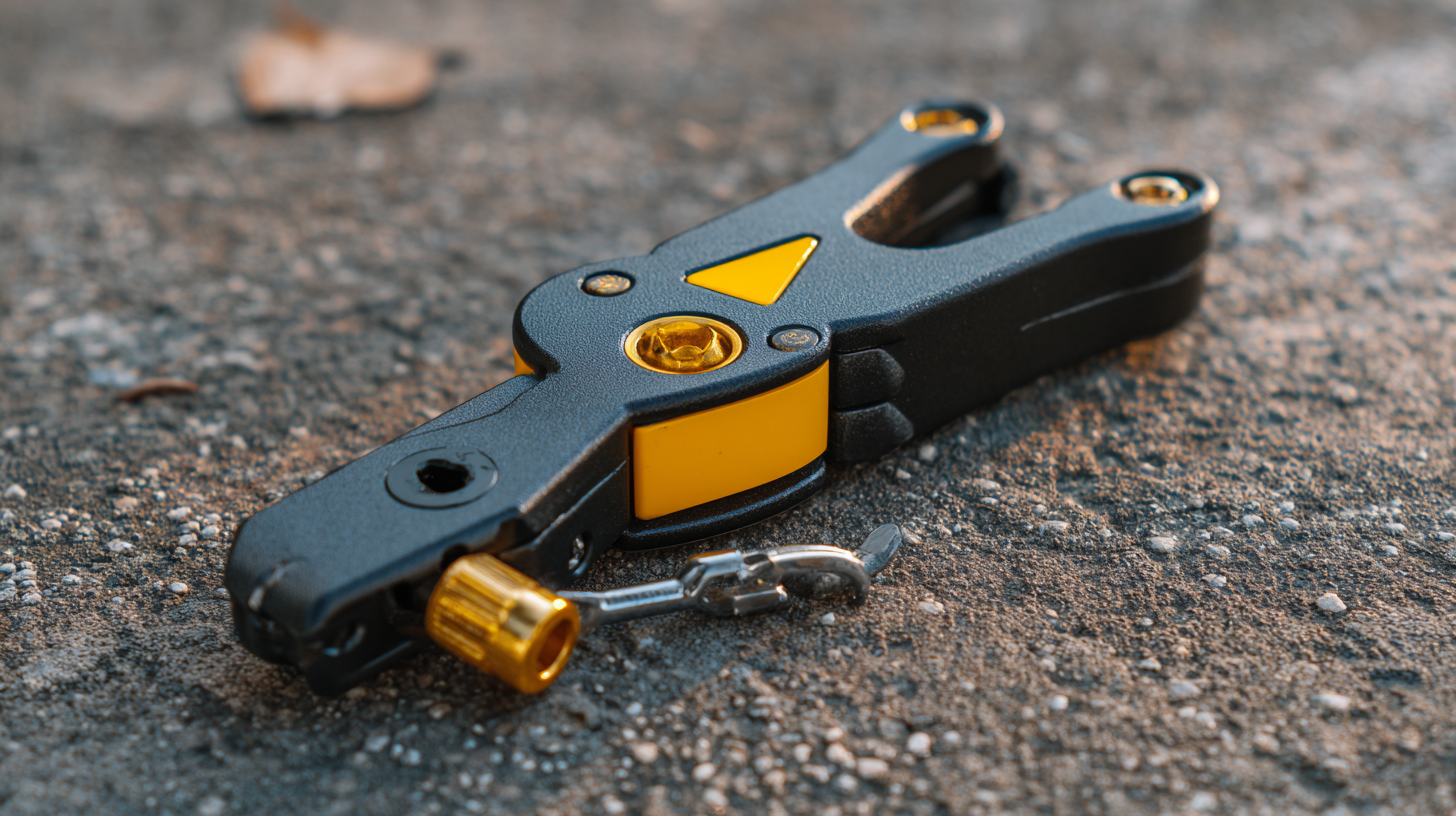
When you're choosing one, keep an eye on the weight capacity—most of them lift between 2 to 3 tons. Just make sure the jack you pick can handle your vehicle’s weight comfortably so you stay safe. Also, look for features like a rubber grip on the handle—because nobody wants a slippery grip—and a quick-lift hydraulic system if you want to get the job done faster. It’s also smart to check how high the jack can lift; somewhere around 12 to 15 inches usually does the trick for most cars and SUVs.
Portability is another biggie. A good jack should weigh somewhere between 20 and 30 pounds—to be easy to carry around but still sturdy enough to handle regular use. Plus, go for something compact that won’t take up a ton of space in your trunk.
Bottom line: investing in a quality portable car jack isn’t just about convenience, it’s really about safety too, and it honestly makes doing your own maintenance way less of a hassle.
Safety Considerations When Using Portable Car Jacks
Whenever you're using a portable car jack for repairs or maintenance, just remember—safety always comes first. I read somewhere that over 30,000 injuries happen every year because folks don’t use the right techniques or their equipment isn’t up to snuff, thanks to a report from the U.S. Bureau of Labor Statistics. A big part of staying safe is knowing how much weight your jack can handle. Basically, go for a jack that can support more than your car's weight. So, if your ride weighs around 3,500 pounds, grabbing a jack rated for at least 4,000 pounds is a smart move—it gives you a good safety buffer.
Also, using the right techniques really helps cut down risks. The folks at NIOSH (National Institute for Occupational Safety and Health) stress how important it is to be aware of your surroundings and keep your vehicle stable while it's up in the air. Before you start lifting, make sure your car is on a flat, level surface and that the parking brake is on—basic stuff, but it makes a difference. Once you've lifted the car, getting some jack stands underneath can really add an extra layer of safety—just in case the jack gives out, the car won’t come crashing down. Oh, and don’t forget to give your jack and stands a quick check before you use them—look for any signs of damage or wear. It’s these little things that help make the whole process safer and less stressful.
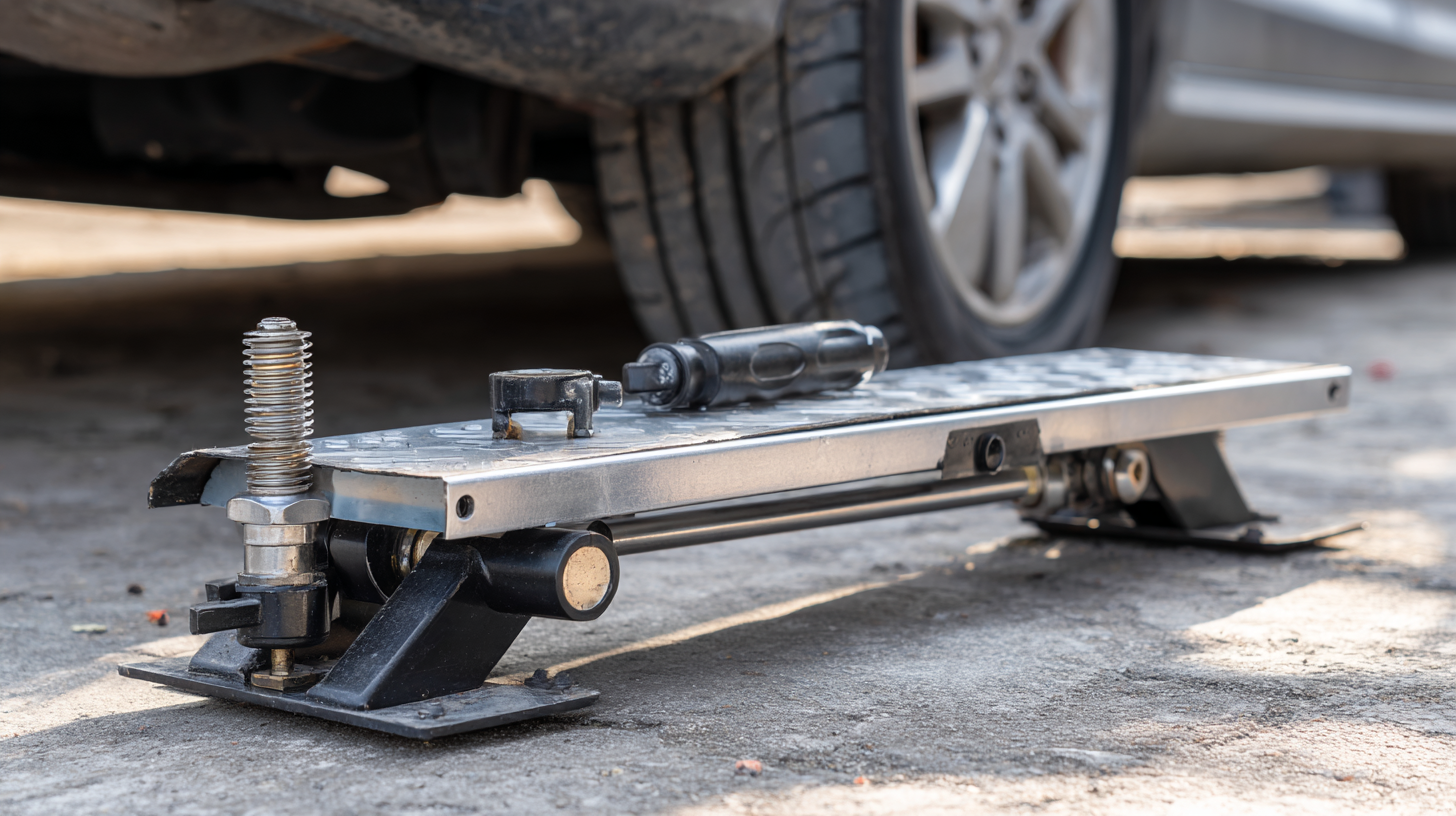
Innovative Designs in Portable Car Jacks for Enhanced Usability
You know, these new designs for portable car jacks are really shaking things up in how we maintain our vehicles. They’re way more user-friendly and safer than the old-school jacks we used to struggle with. Honestly, those traditional jacks could be pretty bulky and complicated, which made roadside fixes feel like a real pain for many people. But lately, the industry’s been making some pretty cool progress to fix those problems. I read in a report from the Automotive Aftermarket Industry Association that there's been a 35% jump in demand for easy-to-use portable jacks over the past three years. That just shows how much folks want products that don’t just work well but are also simple enough to handle without fuss.
Today’s portable jacks are smarter too — they’re lighter, easier to grip, and come with quick-lift features. For example, some models use aluminum alloys, which cut down weight by up to half compared to the old steel ones, making it much easier for everyday drivers to carry and use them. Plus, there are innovations like automatic lifting systems that let you do the job without much effort, boosting safety big time. All in all, these clever designs aren’t just catching the eye of DIY fans—they’re becoming a real game-changer for regular car owners, making vehicle maintenance safer, faster, and a lot less stressful.
Overcoming Common Issues with Portable Car Jacks for Vehicle Maintenance
Maintenance and Care Tips for Prolonging Jack Lifespan
When you’re using a portable car jack, taking proper care of it is super important if you want it to last and work well when you need it. A key tip is to always store your jack somewhere dry and clean—moisture and dirt can sneak in and cause rust, which really messes up its performance. After you’re done using it, just give it a quick wipe down with a clean cloth to get rid of any dirt or oil that might’ve collected.
It's also a good idea to check the hydraulic fluid regularly—that’s what keeps the jack lifting smoothly. If the fluid gets too low, the jack might not do its job properly and could even break down. Make it a habit to inspect the jack before you use it, making sure everything’s moving smoothly. If you hear strange noises or see leaks, don’t just ignore it—these could be signs that something’s off and might need fixing or replacing.
And please, don’t overload your jack! Every model has a weight limit, and going beyond that is just asking for trouble. Always double-check the user manual for the correct capacity—and stick to it, no matter what. If you follow these simple maintenance tips, you’ll keep your portable car jack in good shape and it’ll be ready to go whenever you need it, for years to come.
Enhancing Automotive Efficiency: Insights from Recent Industry Reports on the Portable Car Quick Lift AC Series
The automotive industry continuously seeks innovative solutions to enhance efficiency and convenience, particularly when it comes to maintenance and repairs. The recent reports emphasize the importance of portable lifting equipment that not only saves space but also elevates productivity. One standout product in this landscape is the LUXMAIN AC series Quick Lift. This portable car lift is meticulously designed to streamline the vehicle maintenance process, fitting perfectly within the modern workshop or garage.
The LUXMAIN AC series is a small, lightweight split car lift that consists of two lifting frames and a power unit, making it extraordinarily easy to store and transport. Each lifting frame can be maneuvered effortlessly by one person, thanks to its tow wheel and universal wheel. This convenience allows automotive technicians to adjust lifting positions quickly and efficiently, optimizing workspace. Furthermore, the hydraulic synchronization device within the power unit ensures that both lifting frames operate in unison, providing a reliable solution for safely lifting vehicles.
Another notable aspect of the LUXMAIN AC series Quick Lift is its durable construction. Both the power unit and hydraulic cylinders are designed to be waterproof, ensuring longevity and consistent performance in various environments. As long as the equipment is positioned on a hardened surface, users can lift their cars anytime and anywhere for maintenance tasks. In a fast-paced automotive industry, the ability to conduct repairs with such ease significantly enhances operational efficiency, making the LUXMAIN AC series a must-have tool for professionals.
FAQS
: Common problems include inadequate lifting capacity, stability issues, and wear and tear from environmental exposure.
Checking specifications ensures that the jack can safely handle the weight of your vehicle and prevents accidents.
Regular maintenance, such as lubricating moving parts and storing the jack in a dry place, can significantly enhance its longevity.
Hydraulic floor jacks provide greater stability, a higher weight capacity, and reduce the risk of collapse during repairs.
Newer technologies like electric car jacks offer ease of use, improved lifting efficiency, and enhanced safety features such as built-in safety locks.
Look for weight capacity that exceeds your vehicle's weight, rubber handle grips, a quick-lift hydraulic system, and a lift height of 12 to 15 inches.
A lightweight and compact design makes it easier to store and transport the jack in your vehicle.
According to a report, nearly 70% of vehicle owners perform basic maintenance at home, highlighting the importance of reliable tools like portable car jacks.
Familiarizing oneself with proper operation techniques, selecting stable lifting solutions, and using equipment like hydraulic or electric jacks can help enhance safety.
Conclusion
In our blog titled "Overcoming Common Issues with Portable Car Jacks for Safe Vehicle Maintenance," we take a close look at some of the usual problems folks run into—things like stability and weight limits. We understand how frustrating that can be! So, we switch gears and talk about other options for lifting your car, sharing tips on how to make your maintenance sessions safer and smoother.
We also give some down-to-earth advice on picking the best portable car jack for your specific needs. Plus, we highlight why safety should always come first and showcase some innovative designs that make using these tools easier and more effective.
To top it off, we share simple maintenance tips to help your jack last longer, so you keep a reliable tool on hand whenever you need it. With Yantai Tonghe Precision Industry Co., Ltd. leading the way in hydraulic systems and car lifts, our goal is to help you make smarter choices when it comes to taking care of your vehicle. We’re all about making the whole process safer, easier, and a little less stressful for everyone involved.
Related Posts
-
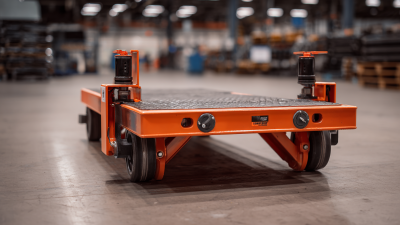
The Future of Portable Trolley Jacks in Global Manufacturing
-

Unwavering Quality in Chinese Manufacturing: Discover the Best 110v Portable Car Lift
-
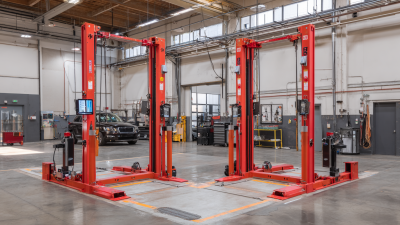
Comparing the Benefits of Portable Column Lift vs Traditional Lift Systems
-

How to Choose the Best Portable Hydraulic Jacks for Electric Cars by 2025 Industry Trends
-
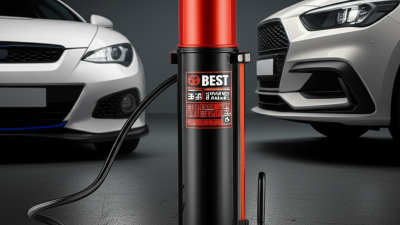
The Future of Efficient Lifting with Best Bottle Jack Quick Pump
-

The Ultimate Guide to Choosing the Right Portable Crane Lift for Your Needs
Blog Tags:


